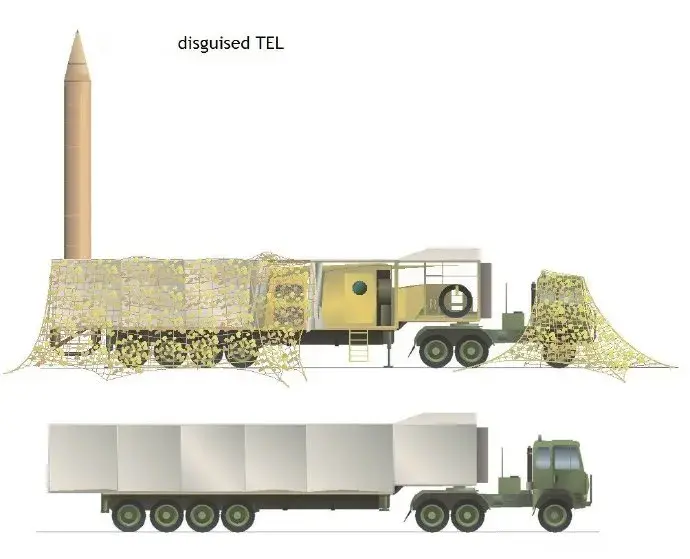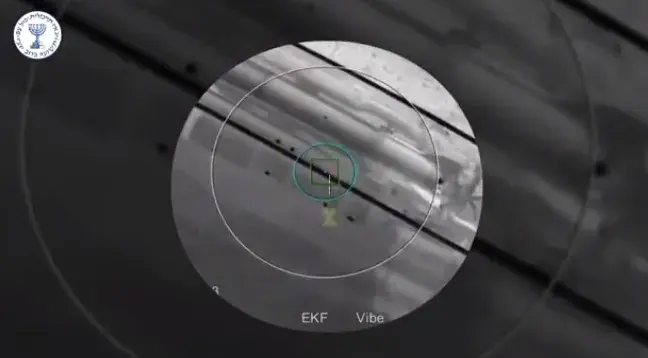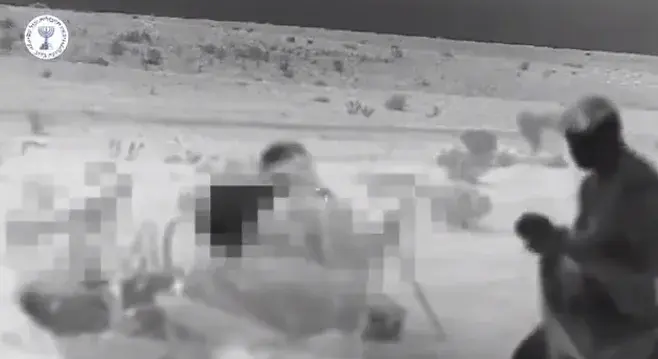“Parasitic Warfare” in Chinese War Studies. The Operation "Lion Power" Of Israel and the "Spider Web" Ukraine. Two asymmetric attacks that changed the rules of war
- Nicola Iuvinale
- 15 giu
- Tempo di lettura: 9 min
by Gabriele and Nicola Iuvinale
Abstract
The "Department of Research on Theoretical Innovation" of the Chinese CSSC studied the operation "Lion Power" of Israel conducted against Iran and the "Spider Web" of Ukraine carried out against Russia.
To conduct this analysis, the war institute, linked to the People's Liberation Army, also used a "large-scale model driven by the artificial intelligence program" and built the "Combat Review and Research Agent", driven by a variety of large models, including Deepseek R1/V3.
For the think tank "Lion Power" and "Spider Web Operation" are not only military attacks, but also represent the rise of a new form of warfare:the parasitic war. This mode of warfare goes beyond traditional infiltration and intelligence activities and defines a more in-depth and systematic concept of combat, namely the achievement of military objectives through the construction of a "parasitic network" a "military ecosystem" in the enemy's social structure.
Both operations can be considered two asymmetric attacks that, in fact, changed the rules of war. Both the systematic attacks of Israel and the innovative raids of Ukraine indicate that the form of war is undergoing a fundamental change: geographic distance and traditional defense can no longer guarantee security, and internal infiltration and precision attacks will become one of the dominant modes of future conflicts. Parasitic warfare represents a serious challenge to traditional concepts of national security. When the enemy is not an external invader, but a "parasite" integrated into the social structure, traditional border defense, military deployment, and security inspections become relatively ineffective. This threat does not cross the border, but grows from within, radically changing the logic and methods of security defense. As globalization deepens and social interconnectedness increases, parasitic warfare may become one of the dominant modes of future conflict. It represents a shift from physical confrontation to social penetration, suggesting that future victories may no longer belong to the country with the strongest military force, but to those actors who can most effectively penetrate and exploit the adversary's social system.

Operations analysis
The operation "Power of Lion" (o "Rising Lion") is an Israeli military operation launched on June 13, 2025 against Teheran. The attack was also characterized by targeted and synchronized actions of selective neutralization(targeted killing)of the top echelons of the Iranian military-security apparatus, through the deployment and use of drones (UAV – Unmanned Aerial Vehicle) previously secretly infiltrated into Iranian territory.
The third chain of operations of the Israeli "Power of Lion", the beheading of prominent figures, demonstrated the deep penetration capacity and precision strike technology of the Israeli security agencies. This series of operations aimed at simultaneously eliminating the Iranian military leadership, disintegrating its command and decision-making system, and preventing effective organization of counterattacks.

Judging by the results of the attack, the Mossad was well acquainted with the locations of the residences of senior Iranian officials and had a thorough understanding of their daily schedules. The operation was launched in the early morning hours, when the Iranian leadership was generally lacking in preparation and operational readiness. Most of the individuals targeted were resting at home, creating an ideal window of opportunity for the operation.
Most surprisingly, the Mossad secretly set up a drone base on the outskirts of Tehran, equipped with suicide drones and small missiles smuggled into the country as spare parts.
The Operation Spider Web" was, instead, a covert drone attack conducted by the Security Service of Ukraine (SBU) in the heart of Russia June 1, 2025, during the Russian-Ukrainian war. The coordinated strikes targeted Russian Air Force long-range aviation assets at five air bases using stealth and truck-launched drones over Russian territory.

Operational Objectives Versus Strategic Intentions: Two Asymmetric Attacks That Changed the Rules of War
Although the Operation Lion Power of Israel and the Operation Spider Web of Ukraine took place in different regions and targeted different adversaries, both represent milestones in the history of modern warfare. They have radically challenged the traditional concept of geopolitical defense and demonstrated how to use innovative tactics to combat powerful adversaries.
Comparing the two operations, we can identify some key similarities.
First, both rely heavily on high-quality intelligence and covert infiltration. Whether it is Israel’s long-term deployment of a network of agents in Iran or Ukraine’s covert infiltration using civilian logistics systems, both reflect the modern warfare concept of “transforming informational advantage into operational advantage.”
Second, both operations adopted unexpected tactical innovations, breaking through the opponent's conventional defensive thinking and making precise attacks in the enemy's deepest areas. Finally, both operations precisely targeted the opponent's key nodes and strategic resources, rather than blindly pursuing large-scale destruction, reflecting the evolutionary trend of modern warfare from "devastating attacks" ad "precision surgical strikes".

The Israeli operation embodies the projection of the country's overall military power, mobilizing hundreds of warplanes, thousands of operatives and a variety of advanced weapons systems. It is a comprehensive strategic military operation. The Ukrainian operation is more like an innovative raid at the tactical level, which relies primarily on wisdom and creativity rather than on solid military resources. The Israeli operation targets the country's overall national capabilities Iran,while the Ukrainian operation focuses on a single but crucial military asset.
In a certain sense, the first embodies the "strong precision shot" and the second one demonstrates the "intelligent counterattack of the weak."
Together, these two actions reveal the direction of future warfare: war is no longer limited to the front-line clash, but extends to the strategic depth of the opponent; information and intelligence advantages are more decisive than pure firepower; innovative tactics and unconventional means can effectively bypass traditional defense systems. Both Israel's systematic attacks and Ukraine's innovative raids indicate that the form of warfare is undergoing a fundamental change: geographic distance and traditional defense can no longer guarantee security, and internal infiltration and precision attacks will become one of the dominant modes of future conflicts.

Parasitic Warfare: A Modern Warfare Paradigm That Integrates Itself Into the Enemy's Social System
"Lion Power" and "Spider Web Operation" are not only military attacks, but also represent the rise of a new form of warfare: the parasitic war. This mode of warfare goes beyond traditional infiltration and intelligence activities and defines a more in-depth and systematic concept of combat, namely the achievement of military objectives through the construction of a "parasitic network" in the enemy's social structure.
The essence of parasitic warfare is to transform the enemy society itself into a weapons platform. The network of agents established by Israel in Iran not only gathers intelligence, but also prepositions combat assets around key infrastructure, turning Iran's territory, buildings and transportation networks into part of Israel's attack system. These agents have become deeply integrated into Iranian society with legal identities, and some have even resided there for more than a few years, forming invisible "military cells" invisible. They are no longer spies in the traditional sense of the term, but a "endogenous army" lurking, capable of disintegrating Iran's military defense system from within at a critical moment.
Ukraine’s “Operation Spiderweb” demonstrates another form of parasitic warfare. Instead of directly targeting Russia, the Ukrainian military has skillfully utilized Russia’s civilian logistics system, telecommunications network, and commercial infrastructure. It has hidden drones in ordinary cargo trucks, used unsuspecting Russian drivers to deliver weapons close to the target, and even used Russia’s mobile communications network to control these attack platforms. This strategy has essentially “reprogrammed” Russia’s civilian infrastructure into Ukrainian military assets, implementing a parasitic transformation of the means of war.
The fundamental difference from traditional infiltration operations is that parasitic warfare is not limited to gathering information or carrying out limited destructive actions, but focuses on building a long-term, invisible parallel military system. Traditional infiltration is usually short-term and target-oriented, while parasitic warfare systematically builds its own "military ecosystem" within the enemy's social structure. Traditional agents can infiltrate the enemy country to carry out a single mission and then retreat, while parasitic warfare agents live in the enemy country for a long time, integrating into society and maintaining military functions.
Parasitic warfare poses a serious challenge to traditional concepts of national security. When the enemy is not an external invader, but a "parasite" integrated into the social structure, traditional border defense, military deployment, and security inspections become relatively ineffective. This threat does not cross the border, but grows from within, radically changing the logic and methods of security defense.
As globalization deepens and social interconnectivity increases, parasitic warfare may become a dominant mode of future conflict. It represents a shift from physical confrontation to social penetration, suggesting that future victories may no longer belong to the country with the strongest military force, but to those actors who can most effectively penetrate and exploit the adversary's social system.

Close Range Launch Strategy: A Modern Attack Model That Subverts the Traditional Defense System
Another common feature of Lion Power and Spider Web is the use of a close-range launch strategy, which subverts the traditional logic of air defense and creates a decisive tactical advantage for both countries. The close launch strategy essentially consists of secretly deploying strike platforms close to the target and launching surprise attacks from very close range, rather than launching weapons from the homeland or from long distances. This strategy has three key advantages in modern warfare and has completely changed the balance between attack and defense.
The close-range launch strategy can effectively evade the detection and interception capabilities of modern air defense systems. Traditional long-range strikes must penetrate the enemy’s air defense layers, but close-range launches essentially circumvent this problem. Israeli proxies have pre-positioned precision-guided weapons and mobile strike platforms around Iranian air defense facilities and launched strikes directly in the vicinity of the air defense systems, depriving these systems of warning time and response space.
Iranian S-300PMU2 and Bavar-373 air defense systems are simply incapable of forming an effective interception chain when faced with weapons launched suddenly from a few kilometers or even hundreds of meters away. Similarly, Ukrainian FPV drones, after being activated from a warehouse near a Russian strategic air base, directly attacked targets in ultra-low flight mode, completely evading air defense systems designed to deal with high-altitude and long-range threats.

Short-range launch greatly improves the accuracy and cost-effectiveness of attacks
By reducing the distance between the launch platform and the target, navigation errors and external interference factors are significantly reduced, resulting in improved accuracy. Israeli agents deployed in Iran use portable anti-tank missiles "Spike" to accurately hit key components of air defense radars from several kilometers away. This short-range attack not only has a success rate close to 100%, but also significantly reduces the technical requirements for weapons systems: no complex drive systems or large motors are required.
Ukraine's drone strike is a model of economy. A single drone costing just $500 destroyed a strategic bomber worth tens of millions of dollars, creating an astonishing input-output ratio in modern warfare. This mode of attack "low cost and high yield" offers a viable combat path for the resource-limited side.
The close-in tactic has produced a psychological and strategic deterrent effect that goes beyond physical destruction. The reality of being "attacked from within" has had a serious impact on the psychology of the military. The Iranian and Russian armies suddenly discovered that their proud territorial depth and air defense systems were not capable of providing basic security guarantees. This collapse of the sense of security has dealt an immeasurable blow to military morale. Especially when the Russian realized that the attack was coming from ordinary civilian trucks and its own mobile phone network, this "omnipresent" threat increased fear and uncertainty.
From a strategic perspective, the success of the close-in tactic has demonstrated to the international community the stark reality that geographic distance is no longer a security barrier. Strategic assets of any country can be subject to short-range, sudden, and precise attacks. This shift in perception has had a profound impact on the global security landscape.
The effective application of close-in tactics marks the beginning of a new era of "zero-range strikes" in warfare. It demonstrates that in a computerized warfare environment, the attacker only needs to plant seeds in the target area to trigger a lethal strike at a critical moment, while traditional territorial defense, border control and air defense systems are becoming increasingly vulnerable. Whether it is the Israeli spy network or the Ukrainian civilian camouflage infiltration, these systems reveal the strategic reality that "distance is dead" in future wars, forcing countries to rethink the fundamental concepts of national security and defense strategies.
Source: the "Department of Research on Theoretical Innovation" is a think tank of the "China State Shipbuilding Corporation" (CSSC), a state-owned shipbuilding conglomerate of People's Republic of China (PRC).
CSSC is one of the top 10 defense groups in the PRC. It consists of various shipyards, equipment manufacturers, research institutes and shipbuilding-related companies that build both civilian and military ships.
The "Theoretical Innovation Research Department" is an "institute of war", which studies "war-related issues". The Department has adopted the technical path of "large-scale model guided by artificial intelligence program" and built the "Combat Review and Research Agent", which can be driven by a variety of large models, including Deepseek R1/V3.
It is at the forefront of "large-scale military and defense applications"; it integrates military thinking of the Chinese People's Liberation Army with combat theories and other elements. It bridges the gap between AI and military and defense applications, providing high-level "professional intelligence" to China's military and defense sectors.
In November 2020, the United States Department of Defense prohibited American entities, through United States Presidential Executive Order 13959, from owning shares in companies, including the CSSC, connected to the People's Liberation Army.




Commenti